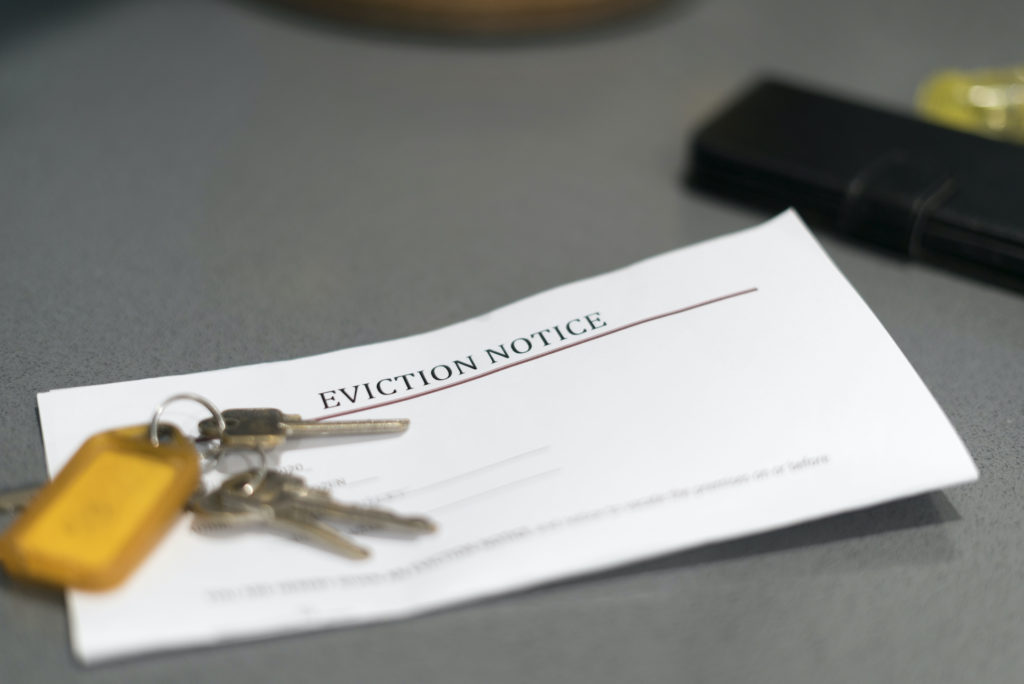
Evicting a renter can create a stressful and uncomfortable environment, but sometimes it’s simply a necessary part of being a landlord. Giving a renter who violates your lease agreement a notice to quit the premises is an essential component of the process. Knowing the basic rules for sending these notices can help give you confidence when you need to take this step.
What is a notice to quit?
A notice to quit, often known simply as “eviction,” is the notice you’ll give to a renter to leave the property. Notices to quit are formal legal documents used in an attempt to have a renter fix a lease violation. Not presenting a renter with a notice to quit is a common mistake that landlords make when trying to evict a renter.
These documents generally ask renters either to leave by a set date or to correct a default (such as overdue rent, damages to the premises, having pets, etc.) within a short time period. The tenancy quit notice gives a renter the chance to fix an issue, informing them that they have a given number of days to resolve the violation before you begin eviction proceedings against them.
State statutes govern some of the details of a landlord’s notice to quit, and these laws vary state by state. For example, state law often sets a minimum period of time in which a landlord must give an eviction notice to quit to a renter.
You will generally need to serve a renter with a notice to quit before you can formally file to evict that renter. Though specifics may vary depending on the state where you reside, the landlord typically must either personally serve the quit notice to the tenant or post the notice in a prominent place (such as the front door). The landlord might also need to send the renter a copy of the notice to quit by certified mail.
What information must you include in a notice to quit?
Though the exact details of the notice to quit that you give to a renter will depend on the specific circumstances, all notices to quit must include a few details, such as:
- Proper tenants, naming all adult members living in the unit
- The property address
- The floor and exact unit number where the renter resides
- The signature and date of signature from the landlord (or your representative)
Why should you send a notice to quit?
You can give a tenancy notice to quit when a renter violates a clause in your lease agreement or because of external factors that aren’t related to that renter — for example, taking the property off the rental market. Some reasons for sending a notice to quit include:
- The renter creates too much noise on an ongoing basis
- The renter doesn’t keep their unit in a clean and habitable condition
- The renter has a dog in their unit even though you have a no pets policy
- There are people living in the unit who aren’t named as tenants on your lease agreement
No matter your reason for filing a notice to quit, you must clearly spell out that reason in the document.
When should you send a notice to quit?
Ultimately, the reason for evicting a renter will determine when you need to send that renter a notice to quit. The minimum is almost always three days before you can file for an eviction. However, some reasons can require as long as a year’s notice.
In many cases, you’ll need to serve a renter with a notice to cease before you can proceed with a notice to quit. For instance, if a renter disrupts other renters at your property, you will first serve a notice to cease. Then, if they continue their behavior after receiving the notice to cease, you can move on to serving a notice to quit.
How should you send a notice to quit?
Remember, state laws vary, and every state has its own rules about sending a notice to quit from a landlord. Some states demand that the landlord (or representative of the landlord) serve a notice to quit in person, while other states will allow you to send a notice to quit by certified mail instead. Some other states even require a state marshal to formally deliver a notice to quit. The most important thing here is that you check your state’s eviction laws to make sure you stay in compliance.
What happens after you send a notice to quit?
You’ll have to wait for one of two things to happen after you serve a renter a notice to quit:
- The renter obeys your notice: A renter might receive the notice to quit and realize you’ll file for eviction unless they fix the issue. A renter behind on rent payments may become current with the hope that you’ll accept the rent and let them stay at your property. If they can’t fix the behavior that breaches your lease agreement, the renter may voluntarily move out before you both have to go to court. Many renters don’t want to have an eviction on their record and will leave before getting formally evicted.
- The renter disregards your notice: Sometimes, however, a renter will ignore a notice to quit. Renters may realize it will usually take more than a month before the case will go to court. The renter may thus try to buy time if they have nowhere else they can go — or because they’re willing to go to court since they think they haven’t actually done anything wrong.
When you’re faced with giving a renter a notice to quit and vacate the premises, you want to make sure you’re doing everything right. Understanding the rules will help you protect yourself legally, whether your renter decides to fix the problem or you have to take the next steps in the eviction process.



